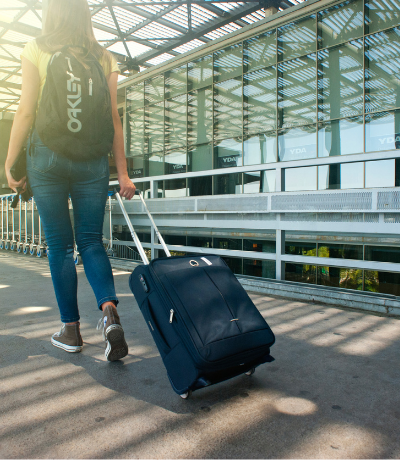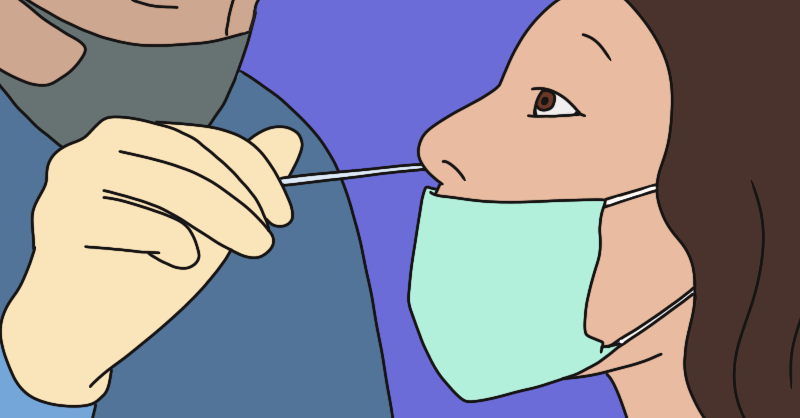How do you get a COVID test to travel?
21 January 2022

With Omicron surging through the global population and the need for negative test results to travel or return to work or school, people are finding themselves shelling out hundreds of dollars to get a test.
Even though the general rule is that your insurance should cover the cost of testing, supplies are limited and testing sites are scheduling appointments weeks out.. Pharmacies are posting signs that there are no tests available.
So what do you need to do to get a COVID test for travel these days? Read on.
What are the current testing rules for international reentry?
If you need a test to reenter the US after an international trip, you’ll need a very specific type of test taken within a very specific time. To enter the US (no matter your citizenship or vaccination status), you’ll need:
- Documentation of a negative test taken within one day of the flight, or
- Documentation of a recent recovery from COVID-19 along with a letter from a health professional certifying you are cleared to travel.
Note: The test must be an authorized viral antigen or nucleic acid amplification test (NAAT).
Where can I get a test that’s trustworthy?
Not all tests are created equal. If you need a test for the peace of mind after potential exposure, just about any test will do.
Here is a list of CDC-approved travel reentry tests available to purchase online:
- Abbott’s BinaxNOW Ag Card Home Test, which will give you results within 15 minutes. Reliable sites to purchase from:
- Get a six-pack of tests here (currently $150)
- Get a two-pack of tests here (currently $70)
- Qured Video Supervised Rapid Test is similar (currently $39 each), is done in two stages. The first is done under video supervision; the second, taken without supervision 24-36 hours later, is meant to confirm the result.
The current recommendation for international travelers is to have at least two tests per person. If the first test is positive, you have a second test on hand when you’re ready to test again. Plus, you won’t be paying an exorbitant amount to get a test when you need it on time.
Warning: scam websites selling fake tests are popping up all the time. Be sure you’re buying from a recommended website.
Can I test myself at home?
Yes you can! Just make sure it’s the right test.
Rapid off-the-shelf antigen tests can provide an initial screening and peace of mind for people visiting family and friends, but it won’t meet the CDC reentry requirements.
For a self-test to meet CDC reentry requirements, it must be a SARS-CoV-2 viral test (nucleic acid amplification test or antigen test) authorized by the FDA.
The test must also have an approved telehealth component that provides real-time supervision. You’ll do the test over a Wi-Fi connection with a telehealth representative who will confirm your identity, watch you administer the test, and confirm the results.
You’ll get proof of your results in an app or by email.
Watch out for fake COVID-19 testing sites
Where there’s demand, there’s a scam. If you’ve been looking for a COVID test lately, you know they’re in short supply and scammers have pounced on the opportunity.
Here’s how to be sure the testing site is legit:
- Ask a trusted health provider for a referral
- Check with your local health department before trusting the site
Even worse than getting a fake test, some people are getting scammed out of their personal identifying information at these sites. Watch out for testing sites that ask for a social security number, credit card information, or other health info that can be used to steal and sell your identity.
Bonus: Get a free at-home COVID test now
Just this week, the US federal government announced that free at-home tests are available. As of this writing, it is unclear whether these particular tests are suitable to stuff in your suitcase and use to reenter the US after a trip abroad.
Other interesting news
Travel should be accessible to everyone, right? Here are the most accessible destinations in the world.
What’s the value of your passport? The strongest passports in the world – that is the ones that allow their holders to visit the most destinations visa-free – are not held by US citizens.
Curious about van travel? Here’s why it might (or might not) be for you.
Stay hydrated! See the list of 16 favorite travel mugs for hot or cold drinks on the road.
Castles in Europe – see the list of 10 castles in Europe where you can live like royalty.
Damian Tysdal is the founder of CoverTrip, and is a licensed agent for travel insurance (MA 1883287). He believes travel insurance should be easier to understand, and started the first travel insurance blog in 2006.
